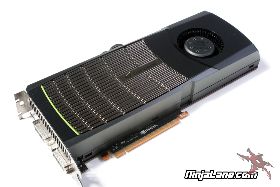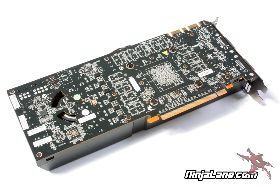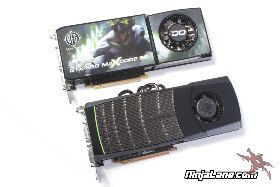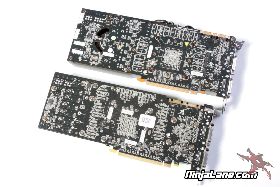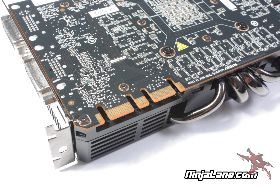After careful consideration I have decided to transfer all hardware review activities to a new domain. I purchased Hardwareasylum.com in 2012 and have been working hard to build a new and improved Ninjalane on that domain. If you are reading this you have reached one of the archived articles, news, projects and/or reviews that were left behind during the site migration.
Please update your bookmarks and be sure to visit the new and improved Ninjalane at Hardwareasylum.com
NVIDIA GeForce GTX 480 Video Card Review
Author: Will West
Published: Friday, March 26, 2010
Card Layout and Features
Here we have the GeForce GTX480 in all of its unspoken glory. The GTX 480 does not really break the mold from early high-end GeForce designs in outward appearance. The fan shroud is completely black and comes with a rather unique cooling solution.
Turning the GTX 480 over allows us to see a bare black PCB with some unusual holes for a single GPU card. The two holes on the back part of the GTX 480 are for fresh air to be pulled in even under tightly squeezed SLI setups.
The length of the GeForce GTX 480 is almost exactly the same as the GeForce GTX 285. Here we have it pictured next to a GTX 260 to give an idea of just how long the card is. Also looking the heatsinks shows that the GTX 480 uses a smaller cage fan than the older GTX260.
Size wise they are very close, both cards feature a black PCB without any heatsink reinforcement plates. One thing to notice is that the extra chip at the front of the GTX 260 GPU is not present on the new GTX 480.
The GTX 480 is a dual slot card much like all modern high-end graphic cards. The front of the card supports the following digital outputs 2 x Dual link DVI and 1 x HDMI. Sadly there is no Displayport connection, but that does not mean it cannot be used in a 3 x monitor surround gaming setup.
Another portion of the GTX 480 that should be very familiar to everyone is the SLI bridge area. Two open bridges will allow for a variety of different SLI setups including Dual, Triple and maybe even quad depending on your motherboard setup.

